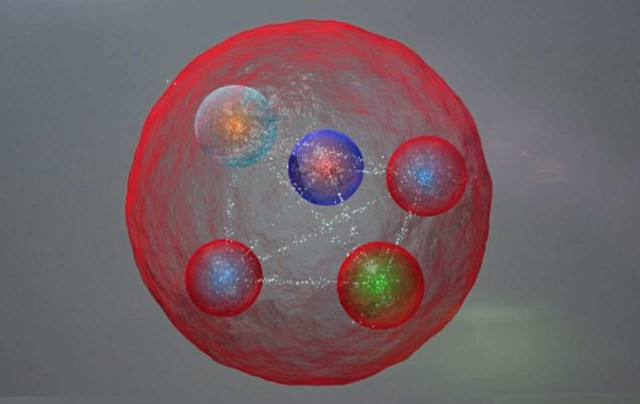CERN’s Large Hadron Collider discovers new particle – the pentaquark, that has eluded scientists since the 1960s.
Above: An illustration of one possible layout of quarks in a pentaquark particle such as those seen at LHCb (showing five tightly-bonded quarks). Credit CERN
The new state of matter, the pentaquark, detected by scientists at CERN’s Large Hadron Collider in Switzerland, it’s made up of 4 quarks and an antiquark.
These exotic particles, that may be formed when star collapse to become neutron star, was first predicted to exist in the 1960s.
LHCb spokesperson Guy Wilkinson, said:
“The pentaquark is not just any new particle. It represents a way to aggregate quarks, namely the fundamental constituents of ordinary protons and neutrons, in a pattern that has never been observed before in over fifty years of experimental searches. Studying its properties may allow us to understand better how ordinary matter, the protons and neutrons from which we’re all made, is constituted.”
LHCb physicist Liming Zhang of Tsinghua University, said:
“The quarks could be tightly bound, or they could be loosely bound in a sort of meson-baryon molecule, in which the meson and baryon feel a residual strong force similar to the one binding protons and neutrons to form nuclei.”
More studies will be needed to distinguish between these possibilities, and to see what else pentaquarks can teach us. The new data that LHCb will collect in LHC run 2 will allow progress to be made on these questions.
source CERN






Leave A Comment